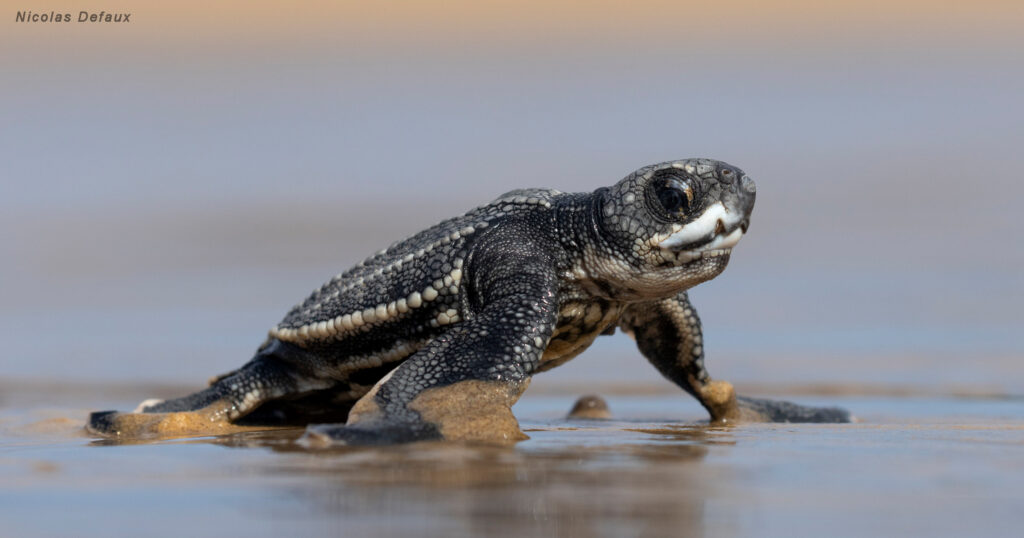Young leatherback turtle; Dermochelys coriacea) heading out to sea on a beach in French Guiana, by Nicolas Defaux
World Sea Turtle Day
2025
7 species of sea turtles inhabit our world’s oceans. These amazing marine reptiles have existed since dinosaurs roamed the Earth. That’s right, these incredible survivors have been around for 110 million years! Of the 7 species, leatherback, green, flatback, loggerhead, hawksbill, Kemp’s, and olive ridley, all classified as (cheloniid) having a hard shell, only the leatherback has a soft leathery shell (dermochelyid).
Residing mostly in tropical and sub-tropical waters, all but the flatback can be found in the U.S. The flatback makes its home in the waters off the coast of Australia.
Sea turtles, depending on their species, can be carnivorous, herbivorous, or omnivorous. However, only the green sea turtle starts as a carnivore and by adulthood shifts its diet to dining primarily on sea grass and algae.
All sea turtles spend their lives in the ocean, with the exception of females who will come ashore once a year to lay their eggs, burying them deep within the sand. Some can make incredible migrations from their feeding grounds to nesting beaches. The longest recorded migration was of a Leatherback who traveled 12,774 miles from Indonesia to the coast of Oregon.
Females will emerge from the water, digging a deep hole on the beach where they will lay up to 100 eggs in a single nest. They can do this up to 7 times each nesting season. Ridley sea turtles nest in large numbers so as to throw off predation, laying hundreds of thousands of eggs over the course of a few days, ensuring enough babies will go on to promote the species’ existence.
It is believed that only 1 in 1000 sea turtles make it to adulthood. However, threats to their survival persist throughout their lives. Habitat change due to climate change, coastal development, and pollution are some, with boat strikes, accidental capture, and entanglement in fishing lines also posing a major threat. While the use of TEDS (Turtle Excluder Devices) has proven to dramatically decrease the number of accidental captures vigilance must be exercised in the conservation of these ancient species.
Photograph by Nicolas Defaux


